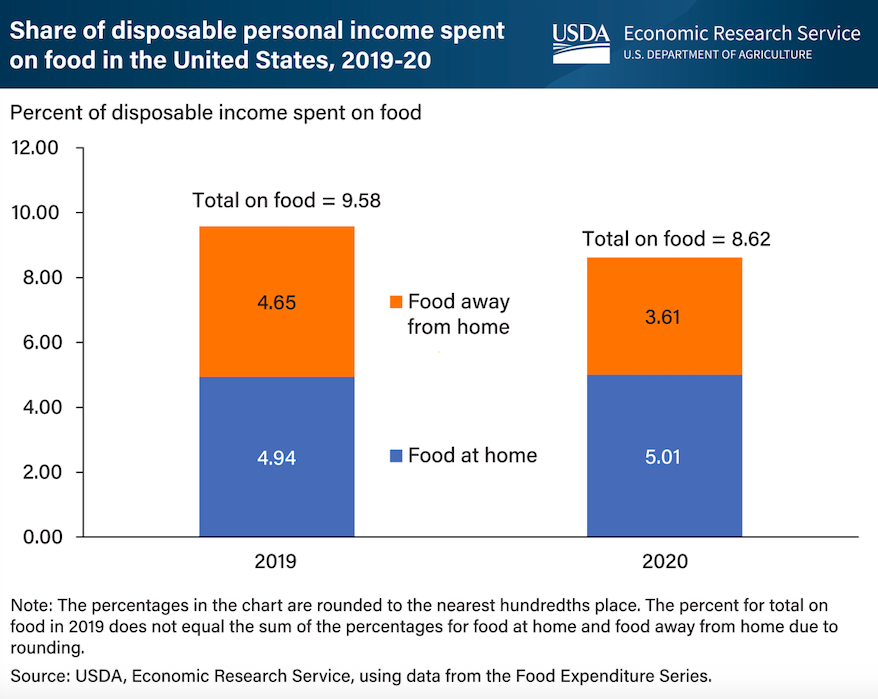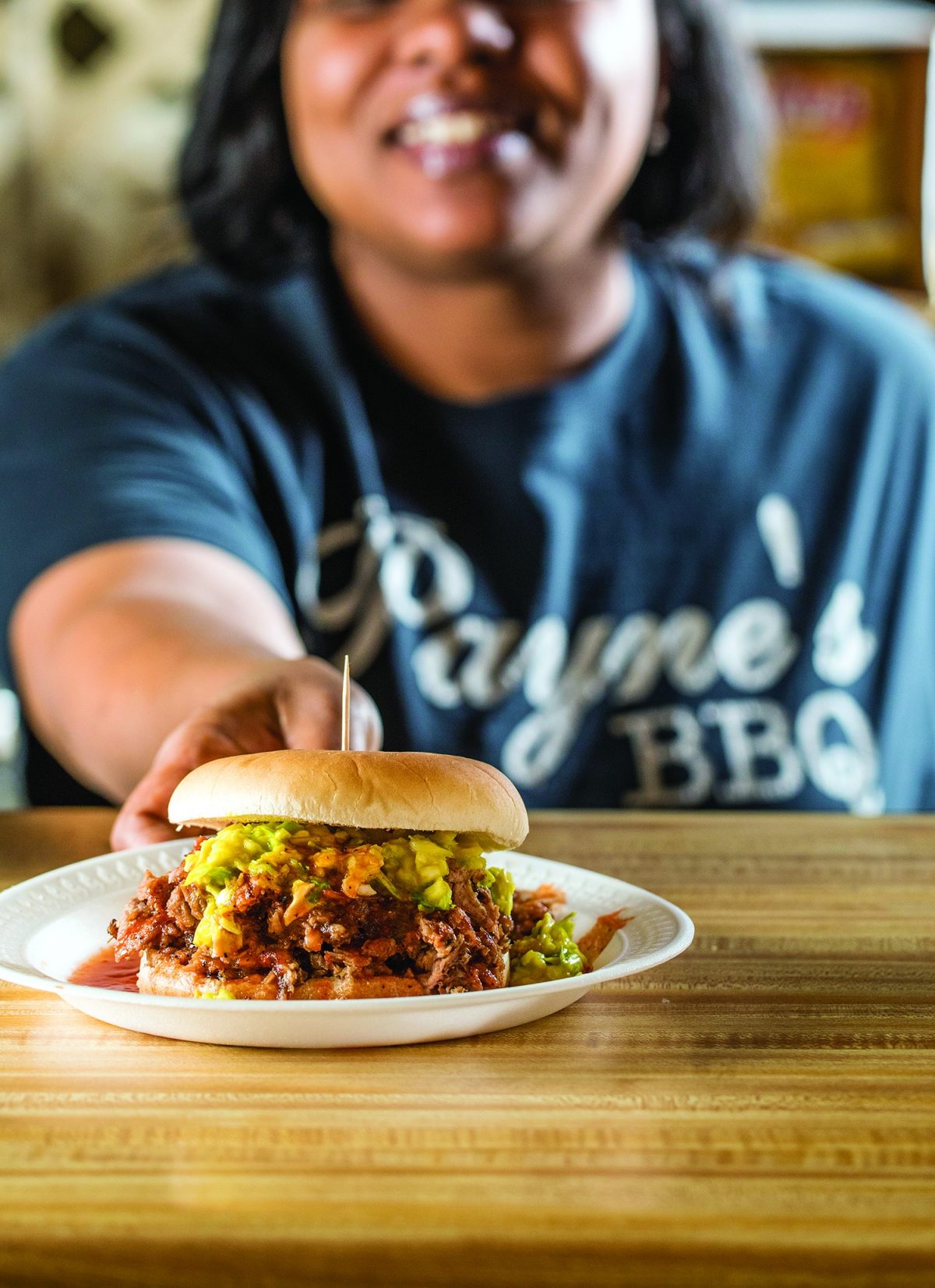Americans spent 10 percent less on food during the COVID-19 pandemic and economic recession of 2020, according to federal data.
Citizens spent 8.62 percent of their disposable income (which the government counts as all money left after paying taxes) on food, the lowest in 60 years, according to the U.S. Department of Agriculture (USDA). Spending on food has been steady for the last 20 years, decreasing only slightly from 9.95 percent of disposable income to 9.58 percent from 2000 to 2019.

Spending on food away from home (restaurants, fast food places, schools, and others) took the biggest hit during the pandemic as Americans spent 22.2 percent less of their incomes on dining out. They spent slightly more (1.4 percent) on food at home from supermarkets, convenience stores, warehouse club stores, supercenters, and other retailers.
The historic changed was fueled, in part, by government assistance programs that gave some Americans more disposable income through stimulus payments and unemployment benefits.
From 1960 to 2000, Americans cut food spending by about about 7 percent, according to the USDA, from 17 percent to 9.9 percent. During that time, Americans cut spending on food at home from 13.7 percent to 5.7 percent. Spending on food away from home rose from 3.3 percent to 4.2 percent.

“The declining share of income spent on food at home in the United States over 1960 to 2000, in part, reflects rising disposable incomes and efficiencies in the U.S. food system, which kept inflation for food-at-home prices generally low,” according to the USDA. “Higher incomes mean food at home can take up a smaller share of income and allow for more funds for the generally more expensive option of eating out.”
Food prices rose from 2000 to 2019. Food-at-home prices increased by 44 percent. Food-away-from home prices rose by 68.3 percent, according to the USDA.
